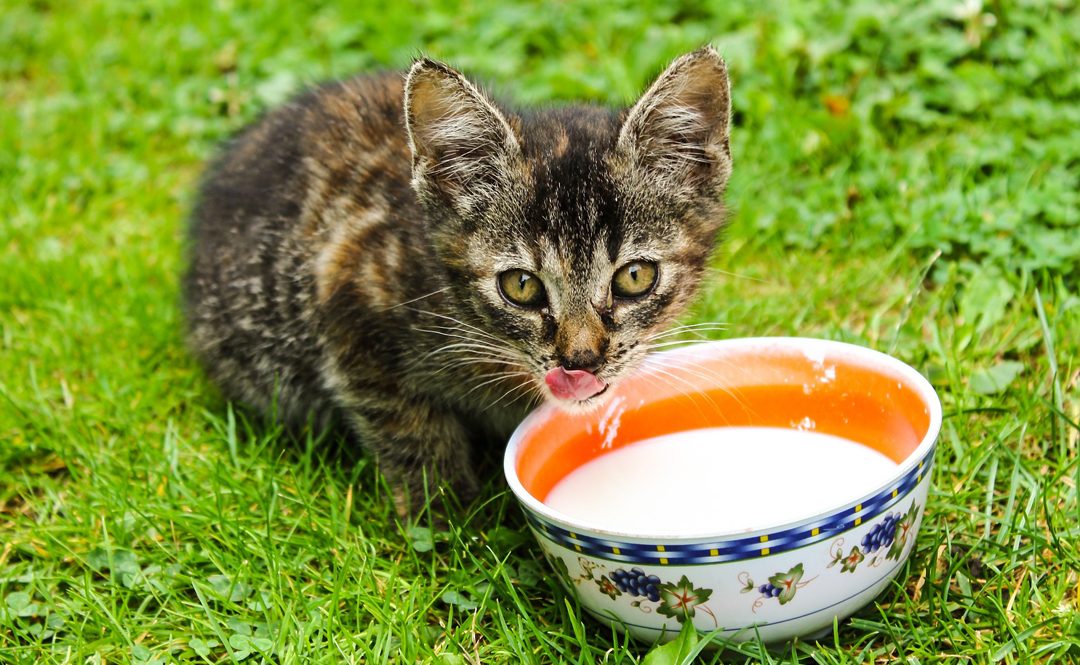The times in which domestic cats were mainly fed with leftover food and milk are fortunately largely over. The awareness is growing to feed the house cat species-appropriate, according to its individual needs. Numerous products are available on the market as sole or supplementary food as well as various snacks and treats. An entire industry is engaged in food for pampered cats. But what about the old-fashioned bowl of milk that you want to “treat” your cat to? What’s wrong with cats not being allowed to drink milk and what about special cat milk?
Save up to 30% on Your First Subscription in Pets
Overview
Tummy ache after the white treat
In fact, many cats like to drink milk and seem to have no problems with it. Gourmets among them even nibble fatty cream and are happy about the tasty snack. But what you as the owner often cannot see at first sight is whether the little sweet tooth pays for the white delicacy with stomach ache or at least a more or less pronounced grumbling in the intestines. Some of them even get diarrhoea after having eaten some milk products.
Reasons for the complaints
Milk or milk products contain a type of sugar that cats cannot metabolize well: Milk sugar or also called “lactose”. Lactose is digested in the body by a specific enzyme called lactase. The enzyme is located in the small intestine and breaks down the biosugar lactose, thus helping to make it available for use. If the enzyme is absent or not available in sufficient quantities, the lactose initially moves undigested into the large intestine where it is absorbed and fermented by bacteria. Among other things, gases are produced, which then express themselves, for example, through flatulence. In severe cases diarrhoea can occur. Abdominal cramps and a feeling of fullness occur. This is known as lactose intolerance – which also occurs to varying degrees in us humans.
Where does lactose intolerance come from?
Basically, lactose is a natural substance found in the breast milk of mammals, i.e. not only that of cows, but also in feline breast milk or even in human milk. However, nature has not provided for mammals to ingest this natural product in adulthood and regulate the body to reduce the production of lactase as they grow up – more in some cases, less in others. It is assumed that cats that have regularly consumed cow’s milk on farms over generations and have thus become accustomed to its intake over a long period of time, tend to digest lactose better than others even in adulthood. However, there are no valid scientific studies on this and it is probably difficult to control. The symptoms of lactose intolerance can vary in severity and are often difficult to detect in cats. You should therefore not take the risk of your cat not noticing her stomach ache after drinking milk and avoid feeding her lactose-containing products.
Alternatives to dairy products are often better tolerated
More sensible and for most people just as tasty are lactose-free products, which are now available on the market from various manufacturers. In special cat milk the contained milk was processed. The milk sugar has been split industrially and is therefore harmless to the cat’s intestines. Sometimes other substances are added to the products, and here a second look is worthwhile for you. While the addition of the essential (i.e. vital) amino acid taurine can be quite useful, other carbohydrates and especially sugar are only added as fillers or for the human eye (namely for a nicer colour of the product). In the best case, they provide the cat with unnecessary calories. The cat cannot even taste sugar and is therefore completely worthless for her.
It is also possible to switch to lactose-free human products. This milk or cream can also be consumed by us humans and tastes a little sweeter for us than “normal” milk. Don’t worry, there is no added sugar. The sweetish taste is caused by the lactose already split and is harmless.
Tip:
By the way, you can feed fermented milk products such as yoghurt or cheese mostly harmless. Due to the fermentation process, the products also contain little or no lactose. However, you should still be careful with the dosage, because cheese, for example, contains a higher proportion of phosphate, which is a burden on the kidneys of the cat.
Caution – Calorie bomb
Cream in particular, but also fat-containing cow’s milk are small calorie bombs and should only be fed in small quantities. Test best whether and in what quantity your cat likes the white treat with a shot of water. The more water you can add, the better.
As so often: the amount does it and so even lactose-free dairy products should only be a treat for your feline gourmet.
If your cat is spraying –> Cat Spraying No More!
We hope you enjoyed our May Cats Drink Milk article. We also hope that you learned a bit more and we would appreciate if you would share this article with other cat owners. Also read our article, Behavior Analysis for your Cat Training
You can have a look at all our Cat Products Here
If you want to learn more about Cats and Dogs together, have a look at How to get dog and cat used to each other.
Also interesting: Is Milk Good For Cats?
We hope you like our content and that you will come back for more. Be sure to check out the other articles here on the website and send us a message if you have a great idea for a topic! We love feedback! If you haven’t already, don’t forget to follow us on social media!
Instagram @Pincess_Pets_x3
Pinterest @Priness_Pets_x3
Facebook @OneStopPetShopcom
Want to learn more about the Shih Tzu Dog Breed? Read our Shih Tzu articles:
What you should know about the dog breed Shih Tzu
Do Shih Tzus Get Along With Cats?






